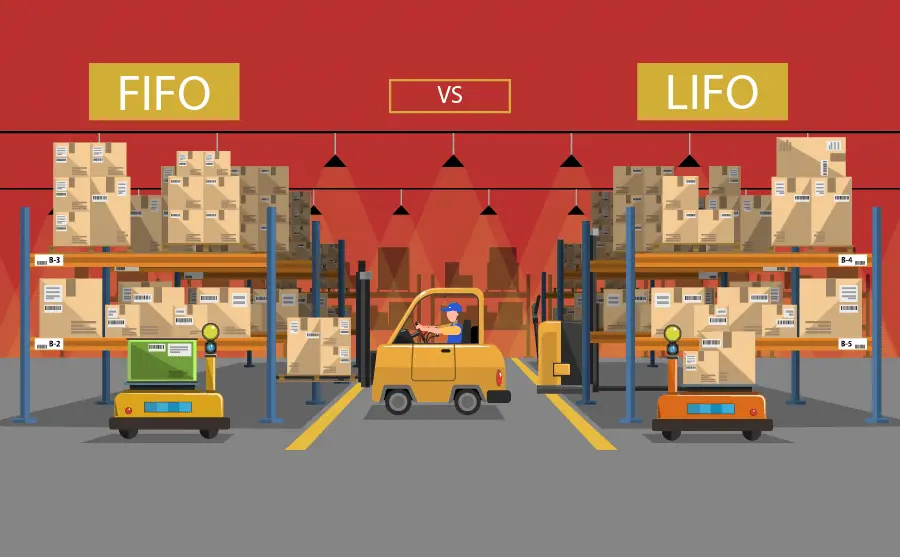
FIFO vs LIFO: Differences, Advantages, Disadvantages
Choosing between FIFO and LIFO inventory methods can significantly impact your business’s tax burden, profit reporting, and inventory valuation. Whether you’re an accountant, warehouse manager, or small business owner, understanding the difference is essential. This guide will walk you through the key distinctions, advantages, disadvantages, and best use cases for both.
- FIFO (First-In, First-Out): Oldest inventory sold first. Often aligns with actual product flow.
- LIFO (Last-In, First-Out): Newest inventory sold first. Often used for tax advantages during inflation.
- FIFO gives higher profits during inflation but leads to higher taxes.
- LIFO reduces tax liability but may undervalue inventory and is not IFRS-compliant.
What is FIFO? (First-In, First-Out)
FIFO assumes that the oldest inventory items are sold first. It closely reflects how inventory moves in the real world — think of perishable goods in a supermarket, where older products are rotated to the front of the shelf.
Using FIFO means:
- Inventory costs on the balance sheet are more recent.
- Cost of goods sold (COGS) reflects older, possibly cheaper inventory.
- Net income is usually higher (especially in inflationary environments).
What is LIFO? (Last-In, First-Out)
LIFO assumes the newest inventory is sold first. While rarely used for physical product flow, it can offer financial advantages during inflation, as the cost of goods sold reflects recent (and usually higher) prices.
Using LIFO means:
- Inventory remaining on the books may be significantly undervalued.
- COGS is higher, which reduces taxable income.
- LIFO is not accepted under IFRS, the international accounting standards, and is only permitted in the U.S. under GAAP, the generally accepted accounting principles.
FIFO vs LIFO – A Side-by-Side Comparison
| Feature | FIFO | LIFO |
|---|---|---|
| Cost Flow Assumption | Oldest sold first | Newest sold first |
| Inventory Valuation | Higher during inflation | Lower during inflation |
| COGS | Lower | Higher |
| Net Income | Higher | Lower |
| Tax Liability | Higher | Lower |
| Accounting Standards | Accepted globally (IFRS) | Not allowed under IFRS |
Advantages of Using FIFO in Your Warehouse
- Easy to implement and understand
- More accurate inventory valuation
- Better alignment with physical inventory flow
- Preferred for perishable and time-sensitive goods
- Accepted worldwide (including under IFRS)
Disadvantages of Using FIFO
- May result in higher income taxes during inflation
- Older cost data might not reflect current market conditions
- Slightly overstates profits when prices rise
Advantages of Using LIFO in Your Warehouse
- Reduces taxable income in times of inflation
- Matches current costs with current revenues
- Can offer short-term cash flow advantages
- Useful in volatile industries like oil, gas, or commodities
Disadvantages of Using LIFO
- Not permitted under international accounting standards (IFRS)
- Inventory may appear undervalued on financial statements
- More complex to manage, especially if inventory isn’t digitally tracked
- Harder to justify for perishable goods or consumer products
FIFO vs LIFO: Which Method Should You Choose?
✅ Choose FIFO if:
- You manage physical inventory with clear product lifecycles
- You’re operating internationally and need IFRS compliance
- You want cleaner financial statements with less tax-driven distortion
✅ Choose LIFO if:
- You operate in a U.S.-only, GAAP environment
- You want to minimize tax liability during inflation
- You deal with commodity-based inventory where prices fluctuate frequently
Real-World Examples of FIFO and LIFO
Let’s say your company purchases:
- 100 units at $10 in January
- 100 units at $15 in March
- Then sells 150 units in April
FIFO Calculation:
- COGS = (100 × $10) + (50 × $15) = $1,750
- Remaining Inventory = 50 units at $15 = $750
LIFO Calculation:
- COGS = (100 × $15) + (50 × $10) = $2,000
- Remaining Inventory = 50 units at $10 = $500
Result: FIFO shows higher inventory value and profit, while LIFO reduces tax burden.
Frequently Asked Questions
It depends on your business goals. FIFO is simpler and globally accepted. LIFO is better for tax savings in the U.S.
Because it can distort income and undervalue inventory, reducing financial transparency.
Yes, but it must be reported to tax authorities and may affect financial reporting.
Not always — it depends on pricing trends. In deflationary periods, LIFO may yield higher profits.